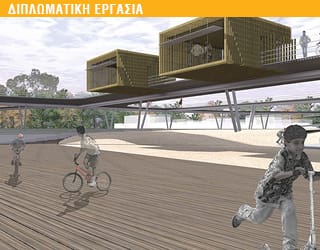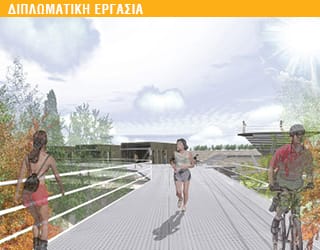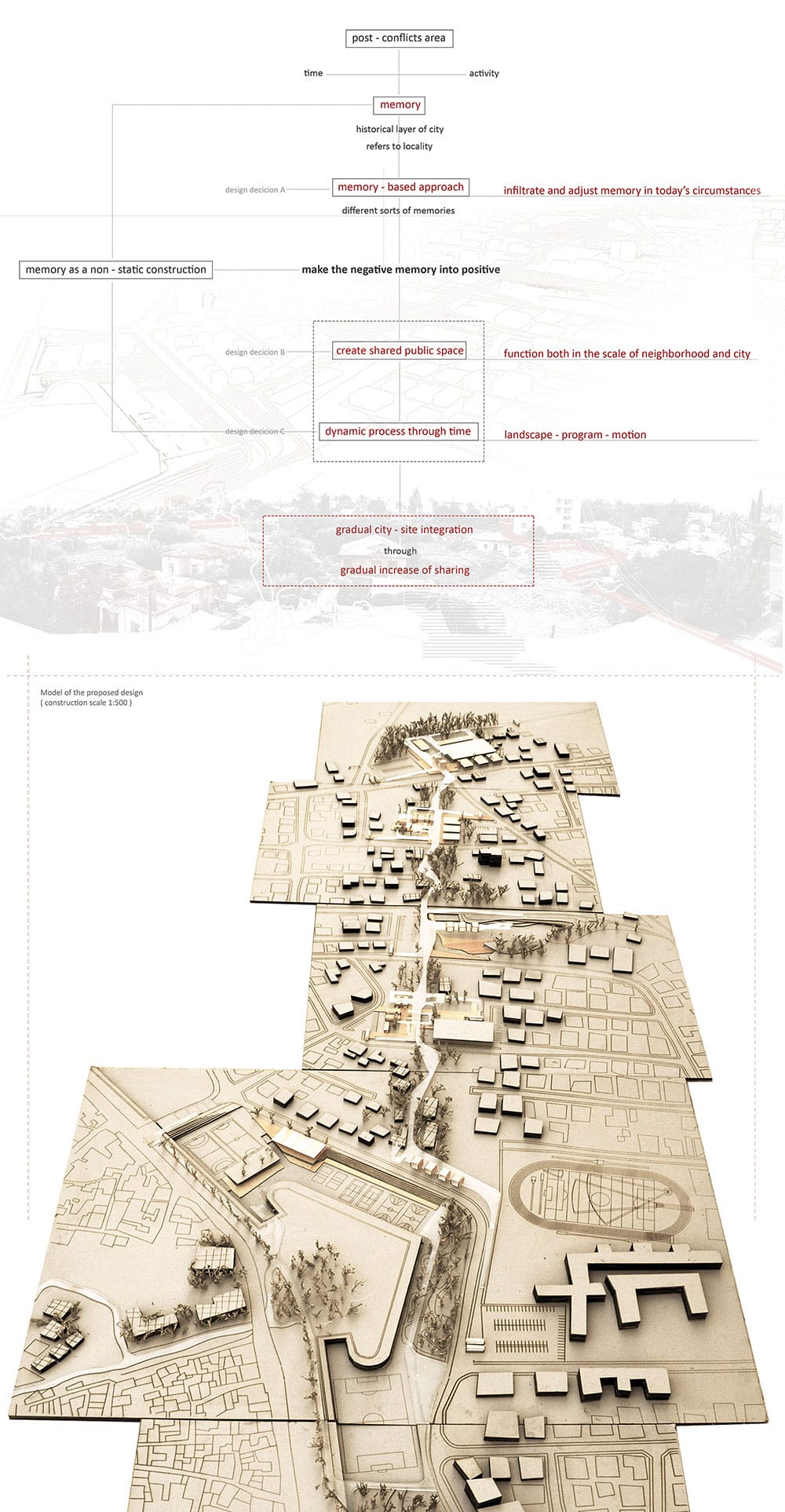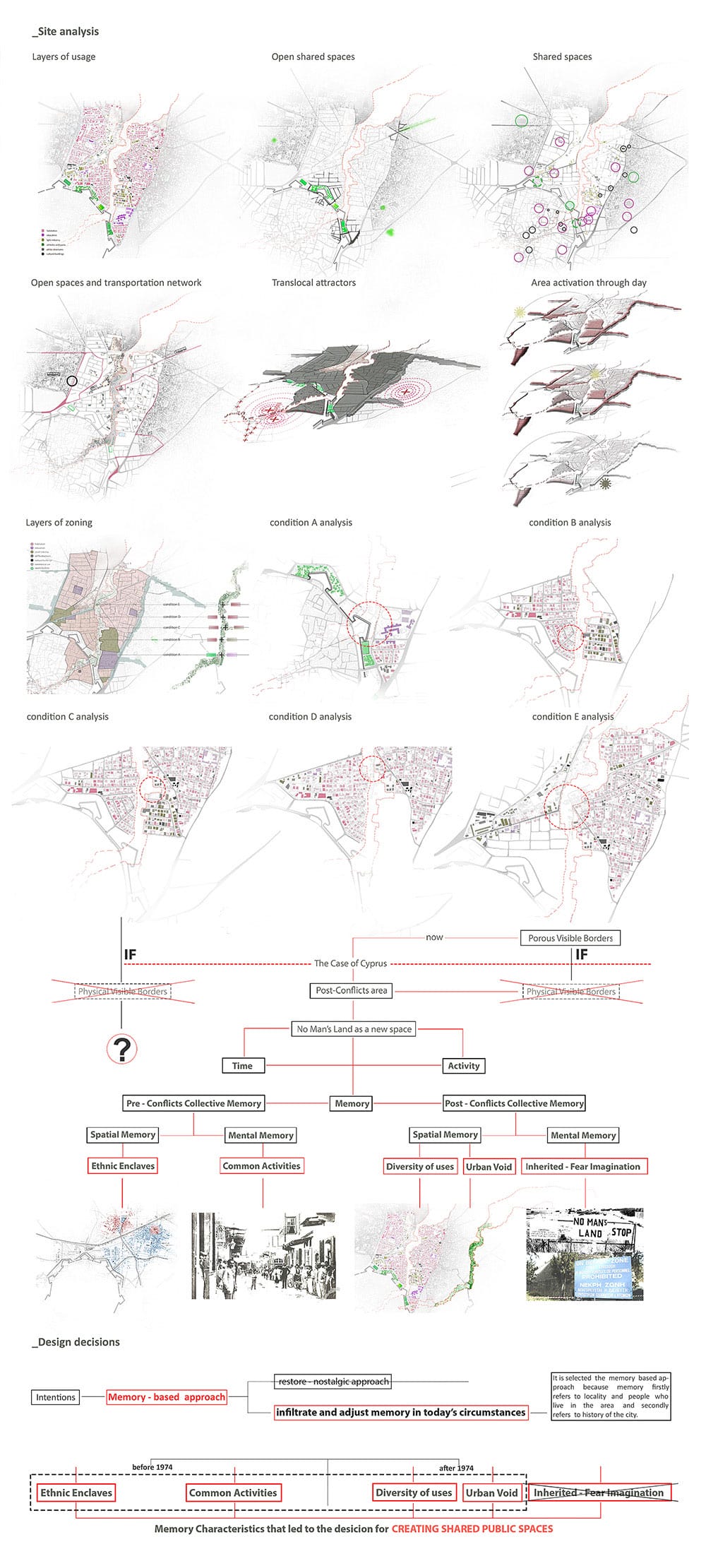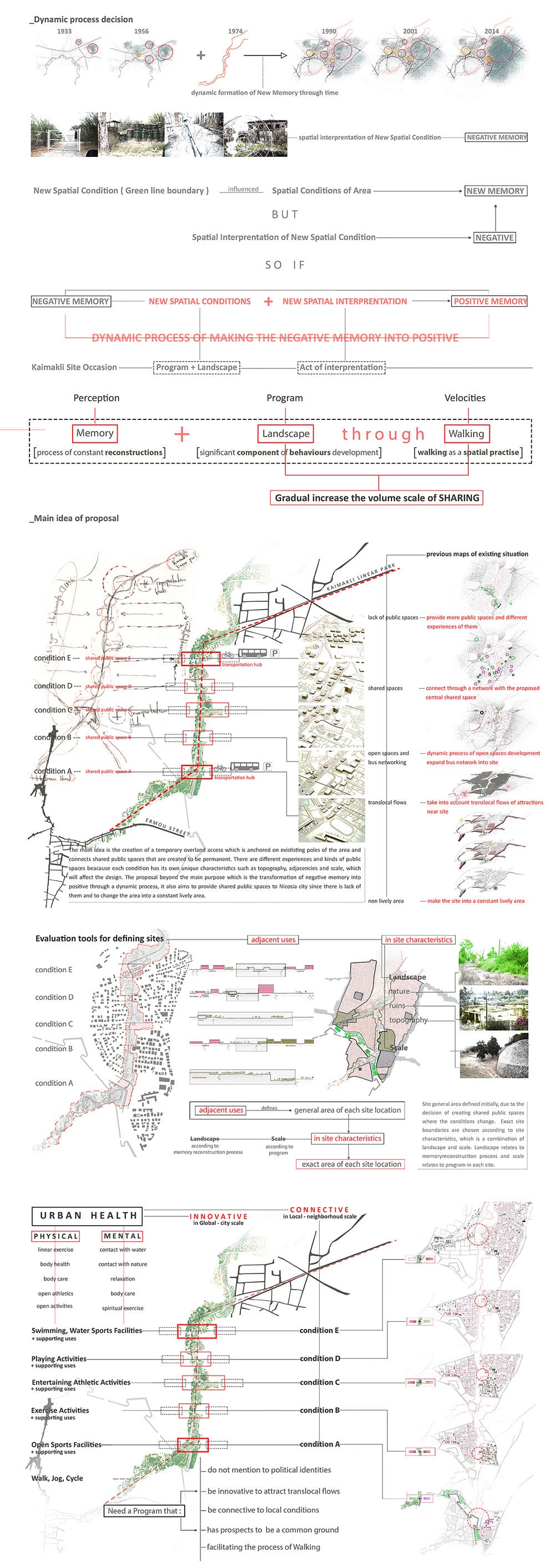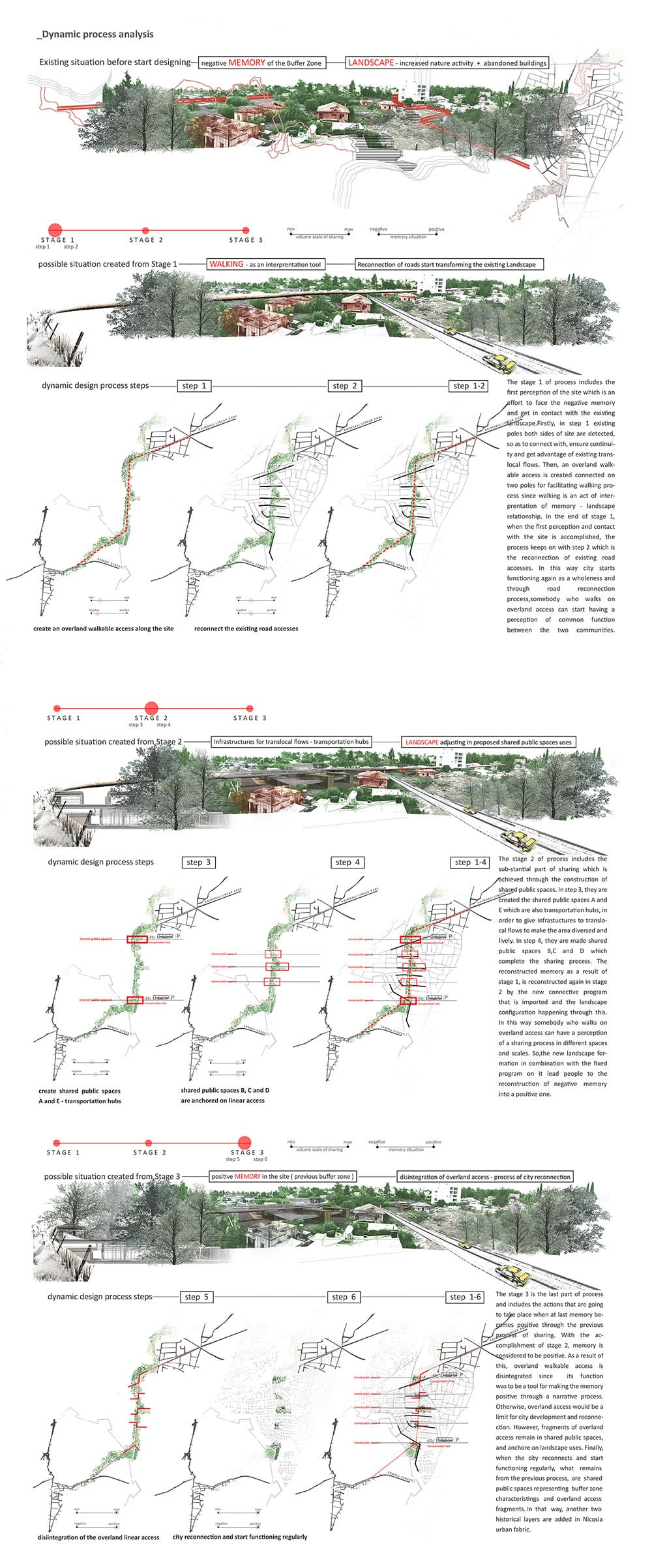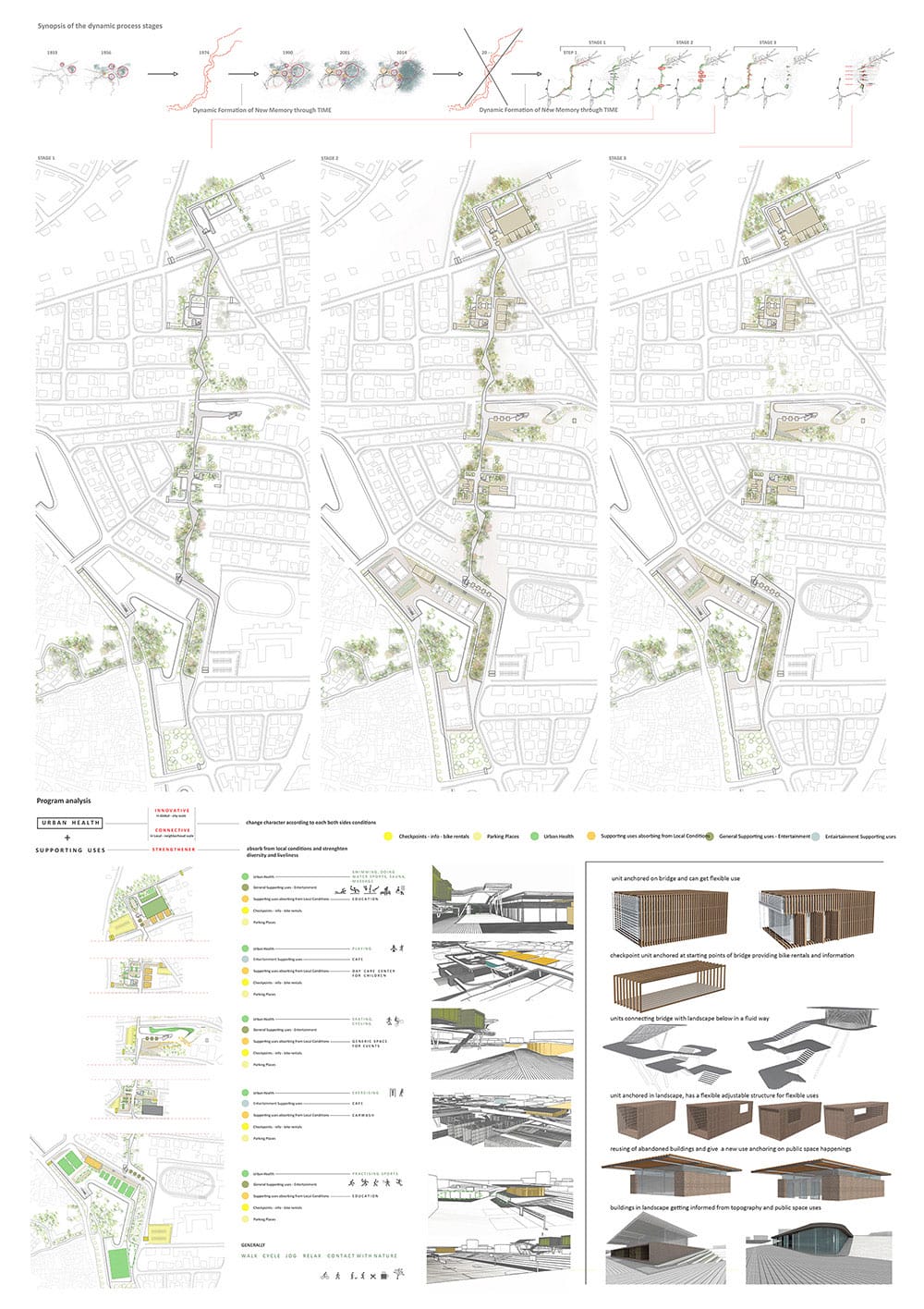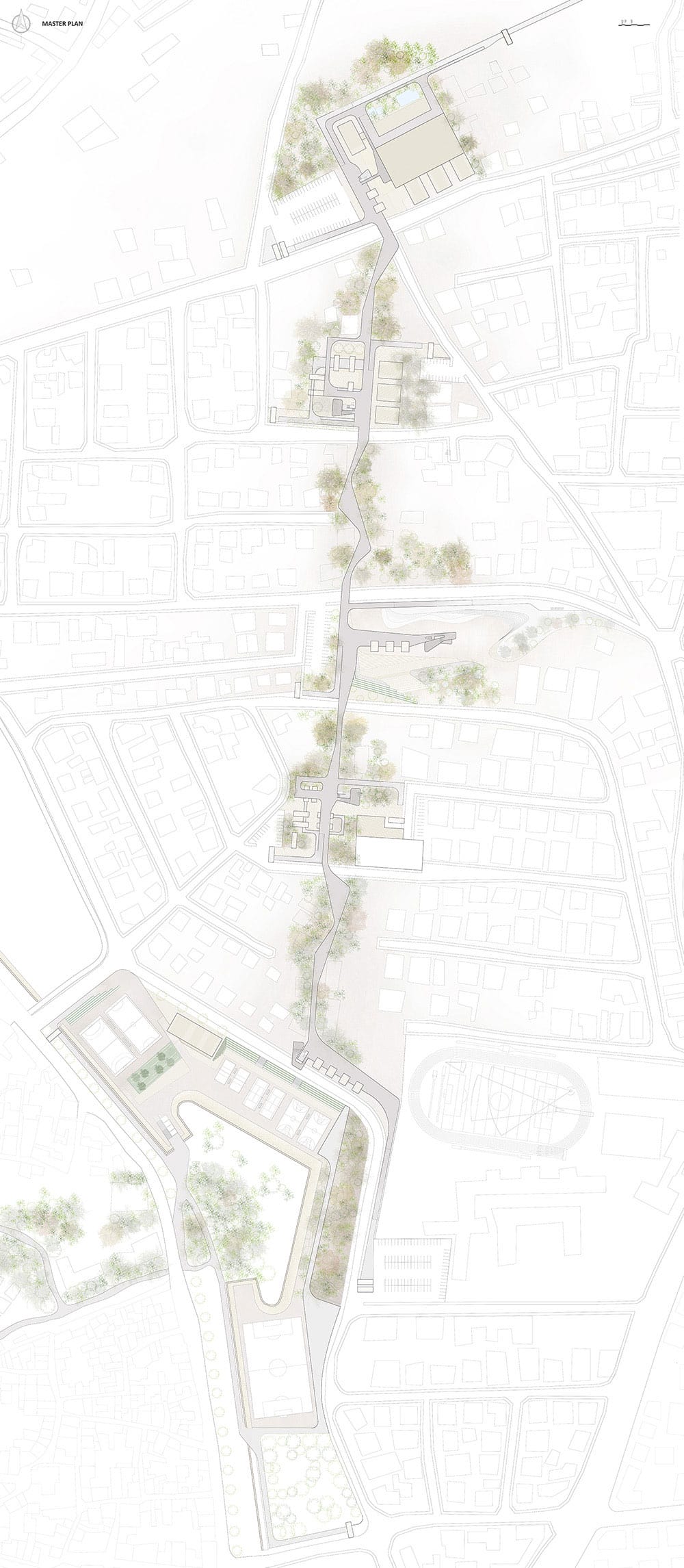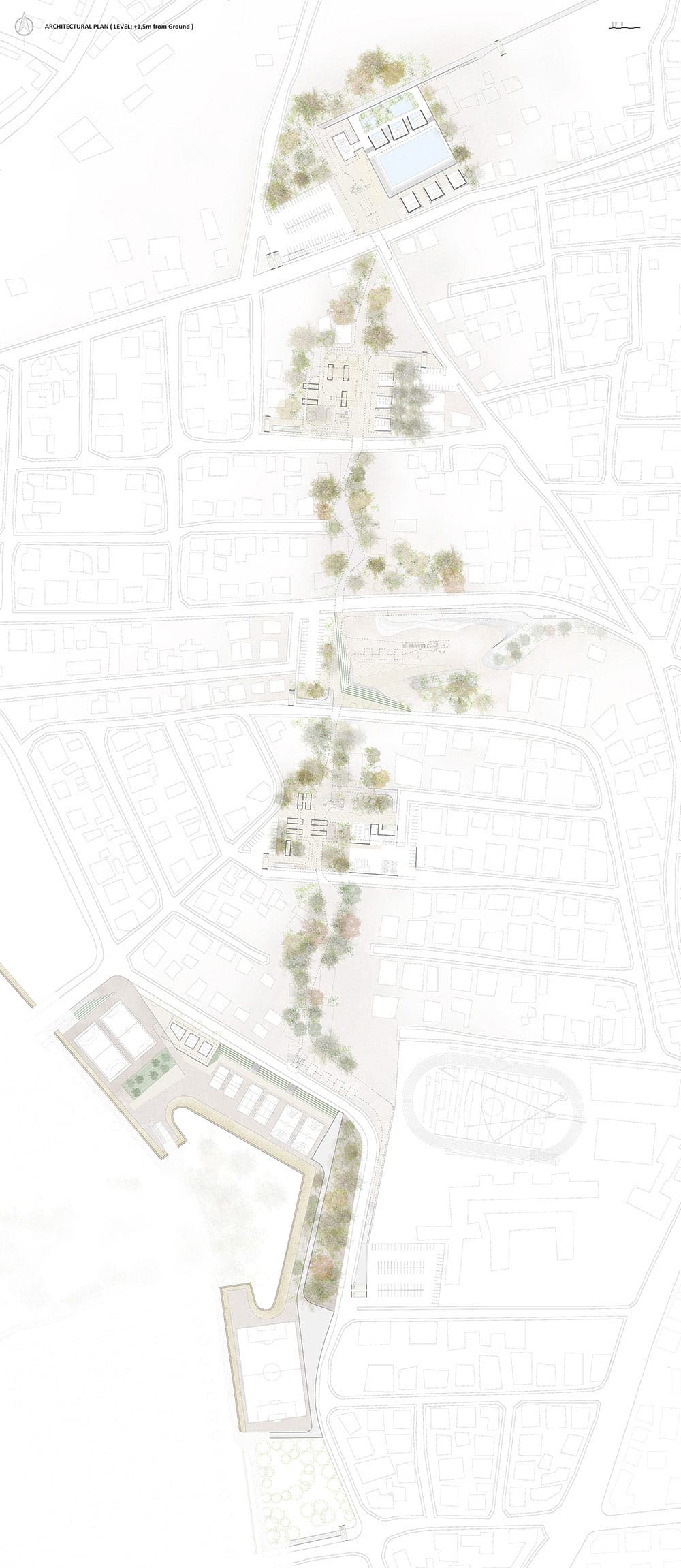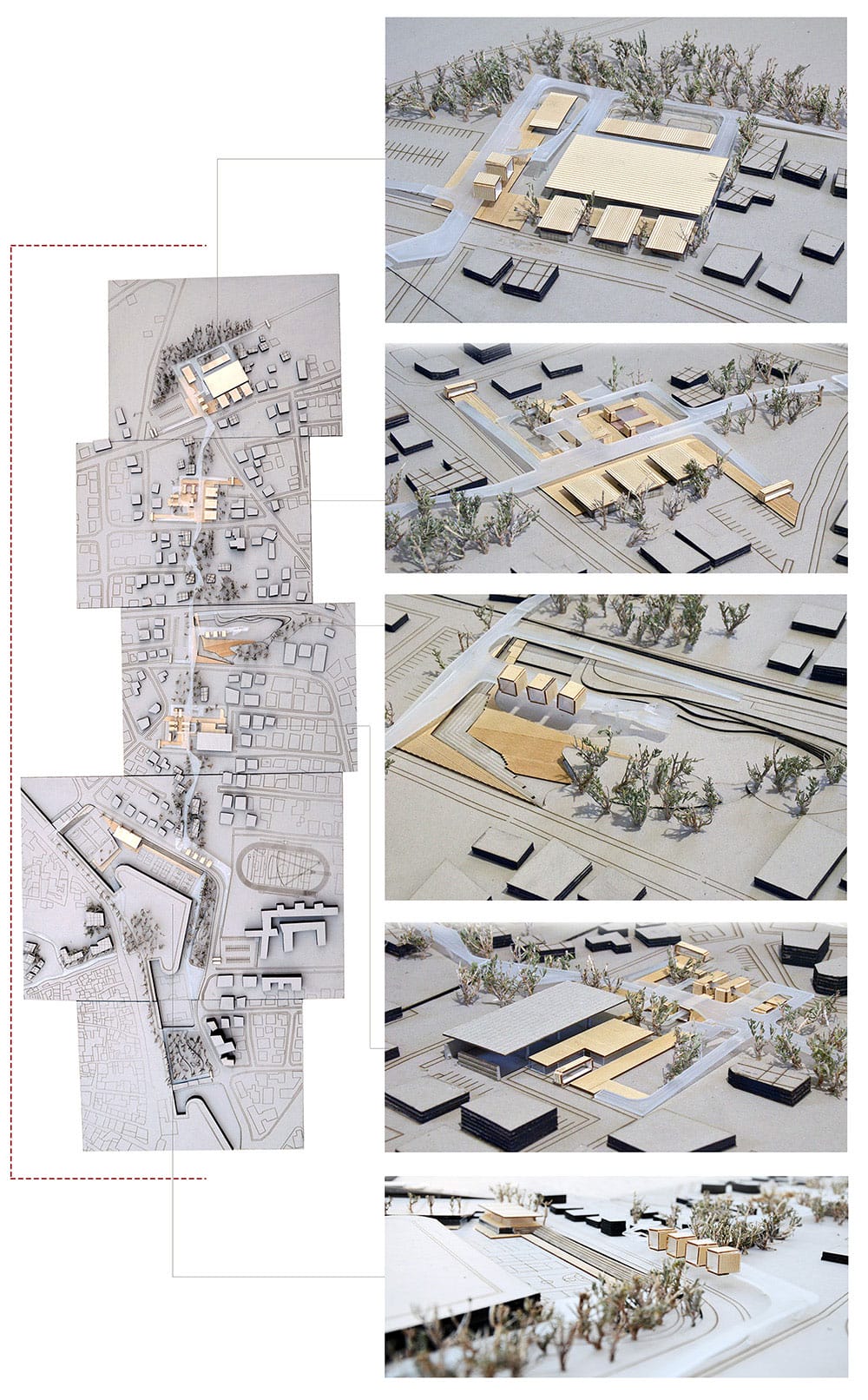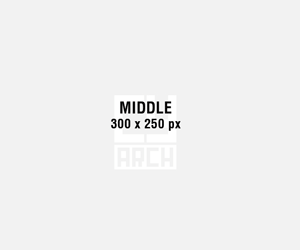Shared Public space in Post – Conflict environments
Adamos Adamou
2015 | Department of Architecture University of Cyprus
Diploma Thseis | Supervisors: Dr. Natia Charalambous, Dr. Andreas Savvides
Αδάμος Αδάμου
2015 | Τμήμα Αρχιτεκτονικής Πανεπιστημίου Κύπρου
Διπλωματική Εργασία | Επιβλέποντες: Δρ. Νάτια Χαραλάμπους, Δρ.Ανδρέας Σαββίδης, Mάριος Οικονομίδης
The diploma thesis is based on an imminent solution of the Cypriot problem and trying to deal with the in between space which is a consequence of the removement of physical borders ,established permanently in 1974 due to conflicts between the Greek-Cypriot and Turkish-Cypriot communities.
The research is located in Kaimakli, an area in the northern side of Nicosia inner walled city. In Kaimakli area, the in between space of Buffer Zone has a small scale in comparizon with ones in other areas and its adjacencies are characterized of intense human activity.
By the removement of Buffer Zone physical boundaries, the in between space is not a neutral empty space, despite its extensive emptiness of human activity, but it is a landscape charged with sociocultural representations, mentioning conflict memories and separation. Consequently, since the physical boundaries are removed, the condition of limit remains encased in a more imaginary dimension, which is the dimension of negative memory.
Therefore the issue of memory is framed as the basic strategy parameter of speculation and design approach of the diploma thesis. An attempt is made through a dynamic and evolving process over time, to transform the negative memory into positive, creating conditions of sharing, interaction and interface encouraging peaceful and healthy co-existence.
Memory is considered to be important and essential component of the temperament of the area, because in addition to its reference to negative events, also relates to local features and patterns of living, whether existing before the separation or developed because of this separation. So, a design approach based on memory issues, constitutes a direct reference to the locality and identity of the area, and through these sorts of spatial configurations is accomplished a long-term sustainability of the area.
The analysis of the study area, the reading of its progression through time and the evaluation of the current spatial configuration, led to the verification of the claim that memory is not static but it is a continuous process of constant reconstructions. Having as a starting point the understanding of the concept of memory as spatial and non-static construction, the thesis proposes that the design has to be a dynamic and evolving process.
The reconstruction of memory and its transformation into positive is based on a fluid process of three negotiating axes which are the landscape, the program and the movement.. The different velocities and ways of movement, offer different readings and perceptions of the landscape, which mutates dynamically in time with the gradual installation of the program. In this way, the dynamic mutability of the landscape, reconstructs memory and creates new conditions. The program selected in order to support design process, is innovative in the scale of the city so that to become an attraction and bring diversity of users, but it is also connective in local scale, after it derives from adjacent conditions.
The design proposal consists of three basic steps that occur one after the other through a depth of time. The first stage is the first approach and contact with the area just after removement of the physical boundaries as an effort to face directly the existing negative memory. This is achieved through an overground walkable axis which anchors on existing poles in the region and promotes a kind of supervisory movement over the existing landscape. The second step is the installation of shared public spaces in strategic locations, which start mutating substantially the landscape and promote an involving movement therein and a growing process of interaction and interface. The third stage, considering that the reconstruction of the negative memory is accomplished, is the partial disintegration of overground walkable access since its function was to be a tool for spatial interpretation of memory-landscape dynamic relationship. With the implementation of disintegration, the urban fabric is left to develop and unite. However in the proposed shared public spaces, overground axis remains, and anchors on the new landscape that develops. Eventually, when the city reconnects and start functioning again as a wholeness, what remains of the proposed procedure, are shared public spaces of different scale and character that they represent and refer to different conditions of the previous Green Line limit, as well as fragments of overground walkable axis. In this way, another two historical layers are added in the urban fabric of the city of Nicosia.
To sum up, through a dynamic process that derives from the past and get informed from the present, is made an effort of memory reconstruction and transform it from negative one into positive. With basic fundamentals the landscape, the program and motion, the process gradually increases the intensity of interaction, beginning with a supervisory narration and continuous to direct involvement.
Η παρούσα διπλωματική εργασία ασχολείται με το ενδεχόμενο μιας επικείμενης λύσης του κυπριακού προβλήματος και διερευνά το διαχειρισμό του ενδιάμεσου χώρου που προκύπτει, με την απομάκρυνση των φυσικών ορίων της Πράσινης Γραμμής, τα οποία τοποθετήθηκαν οριστικά το 1974 εξαιτίας των διαταραχών μεταξύ των δύο κοινοτήτων, Ελληνοκυπρίων και Τουρκοκυπρίων.
Η πρόταση τοποθετείται στο Καιμακλί, περιοχή που βρίσκεται βόρεια του ιστορικού πυρήνα της εντός των τειχών πόλης της Λευκωσίας. Στην περιοχή του Καιμακλιού, ο ενδιάμεσος χώρος της Πράσινης Γραμμής είναι μικρός συγκριτικά με άλλες περιοχές και γειτνιάζει με έντονη ανθρώπινη δραστηριότητα.
Με την απομάκρυνση των φυσικών ορίων της Πράσινης Γραμμής, ο ενδιάμεσος χώρος που προκύπτει δεν ειναι ένας ουδέτερος κενός χώρος, παρά την εκτεταμένη κενότητα ανθρώπινης δραστηριότητας, αλλά είναι ένα τοπίο φορτισμένο με κοινωνικοπολιτισμικές αναπαραστάσεις που παραπέμπουν σε μνήμες συγκρούσεων και διαχωρισμού. Κατά συνέπεια, εφ’ όσον απομακρυνθούν τα φυσικά όρια, η συνθήκη του ορίου παραμένει εγκιβωτισμένη σε μια πιο νοητή διάσταση, τη διάσταση της αρνητικής μνήμης.
Το θέμα της μνήμης πλαισιώνεται ως η βασική στρατηγική παράμετρος του προβληματισμού και της σχεδιαστικής προσέγγισης της εργασίας. Γίνεται μια προσπάθεια μέσα από μια διαδικασία δυναμική στο χρόνο, να “θετικοποιηθεί” η αρνητική μνήμη δημιουργώντας συνθήκες μοιράσματος, διάδρασης και διεπαφής που θα προωθήσουν την ειρηνική και υγιή συνύπαρξη.
Η μνήμη θεωρείται μείζοντος σημασίας και βασικό συστατικό της ιδιοσυγκρασίας της περιοχής, επειδή πέραν της αναφοράς της σε αρνητικά γεγονότα, αναφέρεται επίσης σε τοπικά χαρακτηριστικά και μοτίβα ζωής, που είτε προυπήρχαν πριν το διαχωρισμό είτε αναπτύχθηκαν ως επακόλουθο του συγκεκριμένου διαχωρισμού. Μια σχεδιαστική προσέγγιση βασισμένη σε θέματα μνήμης, απ’ ευθείας αναφέρεται στην τοπικότητα και την ταυτότητα της περιοχής, με αποτέλεσμα να διασφαλίζεται η μακροπρόθεσμη βιωσιμότητα της επέμβασης.
Η ανάλυση της περιοχής μελέτης, η ανάγνωση της διαχρονικής εξέλιξης της καθώς και η αξιολόγηση της σημερινής χωρικής διαμόρφωσης , οδήγησε στην επαλήθευση του ισχυρισμού πως η μνήμη δεν ειναι στατική, αλλά είναι μια διαδικασία συνεχών ανακατασκευών. Έχοντας σαν αφετηρία την κατανόηση της έννοιας της μνήμης σαν χωρική και μη στατική κατασκευή η παρούσα εργασία προτείνει ότι και ο σχεδιασμός οφείλει να είναι μια δυναμική και εξελικτική διαδικασία.
Η ανακατασκευή της μνήμης και η “θετικοποίηση” της, στηρίζεται σε μια διαδικασία ρευστής διαπραγμάτευσης τριών αξόνων που είναι το τοπίο, το πρόγραμμα και η κίνηση. Οι διαφορετικες ταχύτητες και τρόποι κίνησης, προσφέρουν διαφορετικές αναγνώσεις και αντιλήψεις του τοπίου, που μεταλλάσσεται δυναμικά στο χρόνο με την σταδιακή τοποθέτηση του προγράμματος. Κατ’ αυτόν τον τρόπο, η δυναμική μεταλλαξιμότητα του τοπίου, ανακατασκευάζει τη μνήμη και δημιουργεί νέες συνθήκες. Το πρόγραμμα που επιλέγεται για να υποστηρίξει τη σχεδιαστική διαδικασία, είναι καινοτόμο στη κλίμακα της πόλης ούτως ώστε να αποτελέσει πόλο έλξης και να επιφέρει ποικιλομορφία χρηστών, αλλά είναι και συνδετικό στη τοπική κλίμακα αφου αντλεί στοιχεία από τις γειτνιάζουσες συνθήκες.
Η σχεδιαστική πρόταση αποτελείται από τρία βασικά στάδια που συμβαίνουν το ένα μετά το άλλο σε βάθος χρόνου. Το πρώτο στάδιο είναι η αρχική αντίληψη της περιοχής μόλις απομακρυνθούν τα φυσικά όρια, ως μια προσπάθεια επαφής με την αρνητική μνήμη. Αυτό επιτυγχάνεται μέσω ενός υπέργειου άξονα που αγκυρώνει σε υφιστάμενους πόλους της περιοχής και προωθεί ένα είδος εποπτικής κίνησης πάνω από το υφιστάμενο τοπίο. Το δεύτερο στάδιο είναι η τοποθέτηση των δημόσιων χώρων μοιράσματος σε στρατηγικά σημεία , που ξεκινούν να μεταλλάσσουν ουσιαστικά το τοπίο και να προωθούν μιαν εμπλεκόμενη κίνηση μέσα σ ‘ αυτό και μια αυξανόμενη διαδικασία διάδρασης και διεπαφής. Στο τρίτο στάδιο, θεωρώντας ότι επιτεύχθηκε η ανακατασκευή της αρνητικής μνήμης, προτείνεται η μερική αποσυναρμολόγηση της υπέργειας πορείας, αφού ουσιαστικά ο ρόλος της ήταν να λειτουργήσει ως το εργαλείο για τη χωρική μετάφραση της σχέσης μνήμης – τοπίου, με σκοπό την “θετικοποίηση” της δεύτερης. Με την αποσυναρμολόγηση, ο αστικός ιστός αφήνεται να αναπτυχθεί και να ενωθεί. Παρόλ’ αυτά στους προτεινόμενους δημόσιους χώρους η υπέργεια πορεία παραμένει και αγκυρώνει στο νέο τοπίο που αναπτύσσεται. Τελικά, όταν η πόλη ενωθεί και λειτουργεί ξανά ως ολότητα, το τι παραμένει από την προτεινόμενη διαδικασία, είναι δημόσιοι χώροι διαφορετικής υφής και χαρακτήρα που αντιπροσωπεύουν και παραπέμπουν σε διαφορετικές συνθήκες του ορίου της Πράσινης Γραμμής, καθώς και θραύσματα της υπέργειας πορείας. Κατ’ αυτό τον τρόπο προστίθενται ακόμα δύο ιστορικά στρώματα στον αστικό ιστό της πόλης της Λευκωσίας.
Ανακεφαλαιώνοντας, μέσω μιας δυναμικής διαδικασίας που αντλεί από στοιχεία του παρελθόντος και ενημερώνεται από το παρόν, γίνεται μια προσπάθεια ανακατασκευής και θετικοποίησης της αρνητικής μνήμης στο μέλλον. Με βασικούς άξονες το τοπίο, το πρόγραμμα και τη κίνηση, η διαδικασία αυξάνει σταδιακά την ένταση διάδρασης, ξεκινώντας με μια εποπτική αφήγηση και συνεχίζοντας στην άμεση εμπλοκή.


